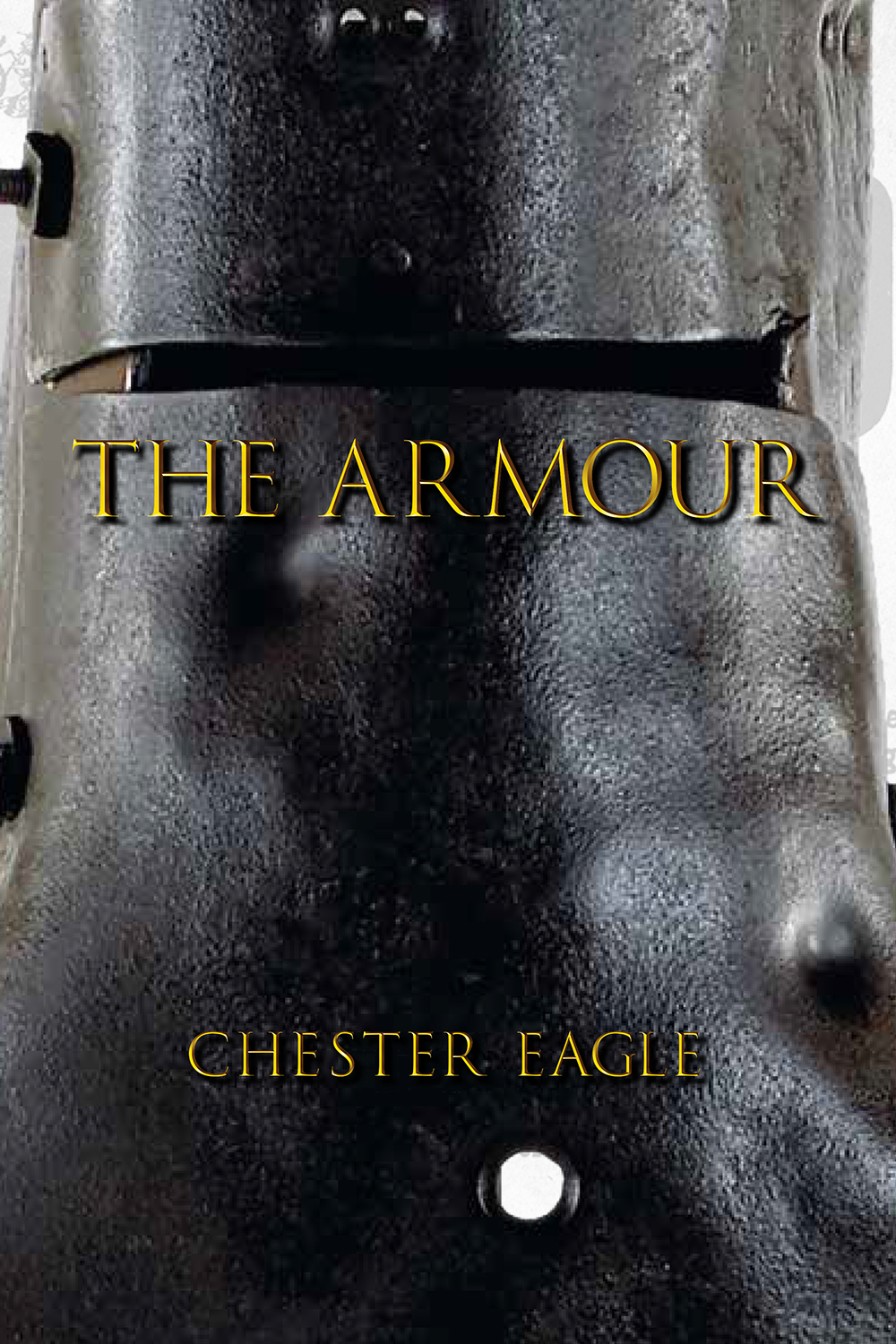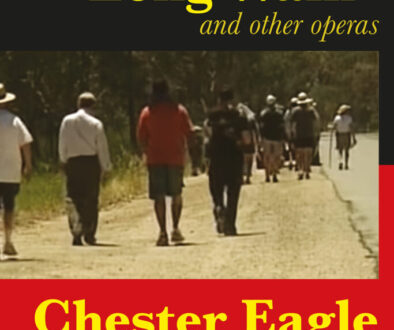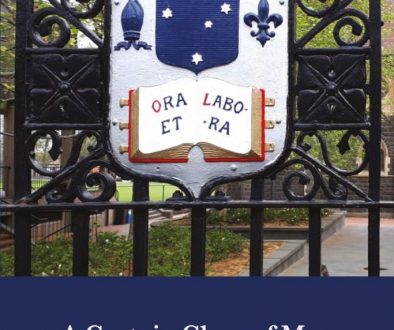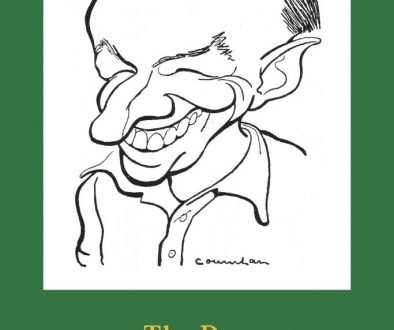The Armour

Written by Chester Eagle
Designed by Brad Webb
Layout by Brad Webb
500 copies printed by Network Creative Services
Circa 3,990 words
Electronic publication by Trojan Press (2017)
The Armour:
The battle of Glenrowan was all but over, but that wasn’t yet understood. Ned had been captured, brought down by bullets aimed at his legs. He’d been carried to the railway station where he was in the care of Inspector John Sadleir, who had a healthy, if cautious, respect for the outlaw.
His superior, Superintendent Frances Hare, had been wounded in the very first exchange of shots and had had himself taken by train to Benalla to have his wrist attended to. The police had surrounded Ann Jones’ wooden shanty and their bullets, as often as not, were taken to be the outlaws shooting from within the hotel when in fact they were entering from one side and exiting from the other. Constable Johnston wanted to pile straw against the building and set it alight. That would force the other three gang members to come out shooting, or surrender. Sadleir wasn’t sure, so he smoked his pipe. It was at about this stage that another train pulled into Glenrowan and off stepped a Catholic priest, the Very Reverend Dean Gibney. He summed up the situation and decided that the power he served required action. There were a certain number of civilians in the hotel, trapped by the shooting, and also, the priest believed, the remaining outlaws, in keenest danger of losing their souls unless they could be reclaimed by a servant of the church. Soon after Sadleir gave Johnston permission to set the pub on fire, Dean Gibney, putting aside any personal danger, strode towards the now-burning hotel. He was called back by Sadleir, but replied ‘I am not in police service. I am going to do my duty and there is no time to lose’ and strode towards the flames, holding a crucifix aloft.
A crucifix: why was he doing that?
Finding an answer to this simple question might take us around the universe and back, so let us say that he was indicating that whatever murderous passions had located themselves in those shooting into and out of the wooden building, he was an agent of God’s mercy. Bullets ended lives, but souls might yet be saved. The bushrangers might be reconciled with the god who had created them. There was a possibility, his task was urgent, nobody should interfere.
Why not?
Because he was doing what God wanted him to do. His mission was holy. Mankind was sinful, but Jesus Christ, by his teaching and his death, had redeemed humanity and put it back in touch with God. Humanity had only to confess, in a state of humility, and it – they – could be saved. Eternity would otherwise be an endless darkness. The crucifix he held aloft might be regarded by the secular-minded as a plea to those with guns not to shoot but Dean Gibney, I feel sure, would have seen it as a declaration that what he was doing had God’s backing and must in no way be hindered. The thing he held was a reminder to mankind that Christ had died a shocking death on an infinitely more brutal cross: it was a reminder …
… of thousands of thoughts, prayers, services, sermons; of music, churches, temples, cathedrals; of lives lived in service; of good deeds and punishments; of faith and loss of faith, of wickedness and over-arching goodness; of everything in life as seen by minds accepting the messages God had sent to earth via the person of his Son.
So much meaning in so small a thing!
Christ had died a young man, after teaching his famous simplicities for only a few years, but by the time of the Glenrowan battle the church had had almost two thousand years to develop his pronouncements into a system of thought covering everything in human life. When the church spoke, it was with the authority of God. Nobody and nothing else could make this claim. Dean Gibney was bent on doing good.
Things were different in the inn. Joe Byrne was dead on the floor, and cold. The last two outlaws, only boys, were dead in another room, their armour put aside. They had given up, and killed themselves. The advancing flames made it impossible for the priest to reach the wounded Martin Cherry. An aboriginal tracker, following Gibney, dragged Joe’s body out. There was no time to get the corpses of Steve and Dan. The hotel was soon a mass of flame. There was nothing to do but watch it burn. People gathered, many of them supporters of the gang. Was it true that Ned had planned an uprising? What would he have done if his derailment of the police train had been successful? Would he have shot the police who survived the crash? Captured them? Did he really have a plan to form a break-away state of north-east Victoria? How would he have held the government in Melbourne at bay, and for how long? He was a captive now, this man whose exploits had amused, delighted, or horrified Victorians, and New South Welsh as well. The Kellys were different. There’d never been bushrangers like them. Anyone would have told you, on that calamitous morning, that the gang had captured the imaginations of people in all walks of life. People wanted them to make fools of the police and humble those who governed; others wanted them executed! They’d shot three policemen at Stringybark Creek, let them pay for that with their lives! Extreme passions had been roused because Ned had declared the actions of the police to have been unjust. Who was he to say? He was the embodiment of all that was impossible about the Irish, people who used their poverty, not to mention their incompetence, to justify anything they cared to do, like stealing cattle or horses and changing their brands (the men) or having too many children too early (the women) or singing and drinking and living obscenely (all of them)! Extreme passions had been roused and many who’d thought themselves successful, and decently so, felt afraid because of this gang, this man, their leader, Ned. Let him face charges of murdering three policemen and see how he felt about that when a properly conducted trial, with judge and jury, had convicted him!
People wanted him dead. Others, many thousands of them, wanted him saved, spared, treated with understanding and compassion. Others again, including important Victorians, thought little about the man but a great deal about his effect, and felt the most important thing about the Kelly affair was to end it swiftly and permanently. A quick trial and a quick execution, and the matter would be over!
But, as we all know, despite the brief trial and speedy execution, the Kelly outbreak has never ended. It’s continuing today, though in a different form, kept alive by films, stage plays, and shelves of books. I’m doing the same thing as I write! Modern Glenrowan, if I may put those two words together, takes every opportunity to remind us. Wooden figures, smartly painted, show where the troopers placed themselves long ago. The block where Ann Jones’ hotel stood, until the fire, is empty still, after all those years. The spot where the fallen outlaw, his legs crippled by gunfire, fell and was captured, is vacant land next door. His exploits are well known, in that folkloric way that means that people are aware of them while uncertain of detail, or even the order of events. Uncertain, that is, except for the experts, many of them in disagreement with each other! Folkloric understanding is different from academic history, which requires evidence, documentation, verification, and lots of patient, rational thought. Folkloric understanding, on the other hand, depends on memorable images. It deals, not in facts, but in ideas that appeal to the mind and refuse to go away. When the Kelly gang were making their preparations for Glenrowan they collected mould-boards from ploughs, pieces of iron that were relatively thin and relatively flat. These were heated in blacksmiths’ fires and worked into shapes that we remember today. Who did this, where, and how many were involved is a matter of speculation. The outlaws and their supporters guarded their secret as best they could, but word reached the police, via the informant known as the Diseased Stock Agent, and he warned them that the outlaws were making suits of armour for some as yet unknown undertaking. Superintendent Francis Hare, recently reappointed to oversee the capture of the gang, refused to believe this. If they were stealing or collecting pieces of metal, it was more likely to be to form a shelter, or gateway to some hideout where they would be safe from gunshots aimed at them.
He was half right and considerably more than half wrong! The pieces of iron the Kellys were collecting were going to protect them, it was true, but first they had to be cut and shaped because they were to become suits of armour offering protection in a battle the Kellys intended to provoke. Aaron Sherritt was betraying them and the people among whom he belonged. He would die. His shooting would bring police up from the city. Their train would round a bend, and at the spot where the rails had been torn up it would crash. In the chaos, the outlaws would shoot or capture those who survived the derailment.
What next?
Max Brown and a number of other writers have noted the presence in the Glenrowan district of uncertain numbers of people connected with the Kellys and the sympathisers who had been jailed for their alleged support when the hunt for the gang was at an earlier stage. The pursuit of the gang, and the thinking of those being chased, had changed a great deal since then. Ned had hoped to make fools of the police and the banks at Euroa.
He’d succeeded, brilliantly.
He’d written a letter explaining his case to Donald Cameron, MLA, who’d asked questions about the charges against the outlaws in Victoria’s parliament. Cameron was embarrassed at appearing to show sympathy for criminals, and backed away from the line of questioning he’d intended to take.
Money from the Euroa bank was spent and/or distributed, so a second strike was needed. The Kellys crossed into New South Wales.
The Jerilderie raid was even more outrageous. The police were locked in their own cells, a second bank was raided, Ned made a speech in a pub, and did his best to find the local newspaper proprietor because he wanted to publish a letter – the Jerilderie Letter, first put before the public in Max Brown’s 1948 Australian Son. It was an angry and passionate piece of writing, demanding justice, at least as Ned believed it applied to his case.
The Victoria Police, and practically everyone involved in the enforcement and practice of law, thought otherwise. Ned and his mates were common killers. They’d shot three policemen at Stringybark Creek, had been on the run ever since, and had to be brought to trial. Criminals couldn’t have the rules changed to suit themselves!
So began the waiting game. The police were still hunting for the Kellys, and they weren’t doing very well. The outlaws had made fools of those who were against them, they were uncaptured, they’d won a certain amount of admiration among the less fortunate classes but they were on murder charges and couldn’t live normally with their families and friends. After Jerilderie, the governments of Victoria and New South Wales offered a huge reward for information leading to their capture. They were wanted men.
What would happen next?
Nothing much until the gang made a move. The police established a camp in a cave near the home of Joe Byrne’s mother in the hope of catching him making a visit. The outlaws must often have been cold and hungry. They were aware that blacktrackers had been brought down from Queensland, and feared their abilities. They must have thought of slipping out of the state and relocating themselves, perhaps in Queensland or even another country, but this would have gone against the grain with Ned. He was a fighter and he believed in his cause. Read the Jerilderie Letter if you need convincing. He was determined not to be beaten, but how could he win?
Eighteen months passed between the Jerilderie raid and the final battle at Glenrowan. Bank managers became cautious, fearing another hold-up, but the gang didn’t take this path. Nor did they hold up stage coaches and rob their passengers, as other bushrangers had done. They’d made a point at Faithful’s Creek station at Euroa, and later at Jerilderie, of winning over the public. It’s important to understand the idea – their idea – that they were not criminals but victims of police corruption: in a word, that they had justice on their side, and it was up to the police to back down.
This was impossible, of course, and the gang must have known it. So there would have to be a battle. Where, when, and how to make sure that they won? They thought about this, they must have argued, and they planned. They needed to stop being chased. That meant that the police, as a force of arms and as a political force, had to be defeated. That meant overcoming a large body of men. A trainload would do! That meant provoking them into some urgent mission. Shooting Aaron Sherritt would do that. The police would outnumber the gang, even with their supporters in the area, so they had to be put at a disadvantage, or taken by surprise. Ripping up the train lines would do that! Hatred of the police and bitterness at their own position must have dominated the gang’s thinking in that long lull between the memorable events at Jerilderie and Glenrowan. The gang changed, and making the armour changed them.
The armour is in opposition to the Cameron and Jerilderie letters, because the armour accepts their situation, or is at least a realistic appraisal of what their situation is going to be, next time they make a move. The armour makes no appeal to outside help. The armour is a declaration of war, and a preparation for war when it comes. The armour is an admission that there’s no way out but fighting, and is therefore provocative. Nobody seeing the gang in armour could doubt that they were ready to carry their plans, whatever they might be, through to the end, an end almost certainly fatal for others if not for themselves.
The armour was also a statement of their vulnerability. A man in armour is a man not far from sudden and violent death. The gang knew this because they couldn’t have not known it. Gathering the metal and forging the armour must have taken quite some time, and the gang must often have been asked by their supporters why they were making it. What were their plans? If, as Max Brown and numerous others have surmised, the gang planned some further political action once they’d overcome the police train at Glenrowan, they would certainly have been questioned about their plans. How else could they have gathered supporters at or near Glenrowan at the time of the intended battle? The armour was a statement that they were determined to succeed, just as it was an expression of their wish to survive an episode that was sure to be dangerous. There is therefore an ambivalence about the armour – it expresses a very dangerous intent, and a wish to go into what might be a final action well protected. The armour says they know that the battle that they wear it in may be their last, yet it shows at the same time a yearning to survive, somehow, unlikely as it may be!
How uncertain they must have been, no matter how determined, as they made it. How fearful they must have been, putting it on when they heard the train approaching at last, after those hours of waiting!
When the battle was over, with Ned captured and the other three dead, the police gathered the four suits of armour, and Thomas Carrington of the Australasian Sketcher drew them, and the illustration in that magazine was the armour’s first step into acceptance by the public as both a physical necessity and an expression of the outlaws’ state of mind after two years of being hunted. The armour was all that was left to speak for three of them, and the fourth, Ned, after his capture, had little to say beyond that brief and memorable exchange with the judge who sentenced him to death, only to die himself a few days later.
‘I will see you there, where I go.’
Ned’s famous prophesy came true in double-quick time. The outlaw and the judge who sentenced him were both gone. It was uncanny. Had Ned been possessed by mysterious powers of divination? Humans are aware that events sometimes have a life, a mind, a mysterious underlying purpose of their own. It appeared so in this case. Nobody but Ned had known the judge with life and death powers over him would die so soon. The mystery of this pronouncement, combining with the amazing character of the armour, caused people to think they had been dealing with forces they didn’t understand.
And they hadn’t understood the outlaws’ state of mind as they made the plans that would bring Glenrowan about. How could they? How could they know what the outlaws themselves didn’t know? Hadn’t understood? That’s to say, the condition of acceptance, of being so lost, despite their strongly maintained lines of communication with families, friends and supporters, that their early description of themselves as people wronged no longer applied to what they had become.
They were lost, they were beyond hope, and though they didn’t, wouldn’t, admit it, some awareness of their condition crept into the armour they were making. It was the only way they could tell themselves what had already happened and what was coming. None of it, that psychic statement of what they were going to bring about – their own deaths as well as the deaths of many policemen – could be built into their plans except by keeping a revolver close to the body in case they needed it, as Steve and Dan did, when Joe was dead and Ned was ….
… lost in the night surrounding a shanty ringed by men with guns. Steve and Dan shot themselves and nobody had time to drag them out of the fire, so their bodies were shockingly burned. The relatives, finding them when the blaze died down, were appalled. And yet, had the young outlaws known it, their incineration was an outcome of their acceptance of Ned’s plan – Was it only Ned’s plan? We can’t say – of making the armour they were going to wear at Glenrowan. After Aaron Sherritt, who might have joined them but preferred to align himself with the police, had been shot! Steve was twenty, Dan nineteen. Ned was twenty-five when he was hanged. One of them, according to Max Brown’s account, said, when he accepted Ned’s invitation to join the gang, ‘A short life and a merry one!’
From that moment to the putting on of the armour was a very long journey indeed. Once they put it on and went out to fire at the police, there was no way back. Planning will get you only so far, and then you’re left wondering what will happen next. Events take over. The first barrage of shots didn’t last long. Three of the outlaws went back inside. Frances Hare took his wrist wound to Benalla! Ned wandered into the night, wounded like Hare. Did he fall down unconscious? Did he sleep? Did he make contact with the supporters lurking in the dark, and if so, what did he say? Did he think of getting on his horse and mounting a charge? He wouldn’t have been able to get on. The weight of all that iron! It prevented the nimble handling of a weapon. It protected him but it limited what he could do. A stray bullet killed Joe Byrne. The youngsters, the nineteen and twenty year old outlaws, must have known they were lost. Where was Ned? Perhaps he was waiting for the dawn and one last effort. Steve and Dan gave up. They put aside their armour – they took it off and stacked it – and ended their short lives. Not so merry after all. The fire that burned the hotel burned their corpses almost beyond recognition. Their family members, when they got to see them after the blaze, were horrified. These smouldering bodies were our sons? Ned was captured, taken to the station, and plied with brandy. Prison, trial, a visit from his mother and a hanging were his future. All hope had gone; there were only the vestiges of a testy defiance. The Victorian Government was so anxious to get the thing over and done with that Ned was an historical relic by the time his last day ended. His head was shaven, photographed, and analysed according to the phrenology of the day …
But let us return to the armour. The four suits and helmets were relics. Carrington’s engravings were reproduced, while the suits became sought-after souvenirs. Frances Hare took one suit to Sunbury, where Sir William and Lady Clarke lived in one of the colony’s finest homes. Police headquarters claimed the others, allowing them to be displayed for periods of time by various government departments. In recent years students of the armour have sorted out the mis-matching parts and put them together again as worn in 1880 by the gang. Appropriate as this may be to a tidy modern mind, it hardly changes the status of the armours in the public’s view. They are …
What are they? What have they become? Have they changed since they were first hammered into shape? Do they know that their creators are dead and they’ve become symbolic of something, just as the cross held aloft by Dean Gibney as he entered the burning hotel had meanings attached to it, as do all the other crosses wherever they may be found in the scattered realms of Christendom? One thing we can say with certainty is that the armour lives because it exists in our imaginations. All of us who know the Kelly story have the armour in our minds. It exists there, like a magnet attracting meanings, explanations, related ideas. We’re not sure that Ned was as innocent as he claimed; three policemen, after all, were killed at Stringybark Creek and they would have told you, if you’d been able to ask them before they died, that they were ‘only’ doing their duty! The Euroa and Jerilderie hold-ups make wonderful stories and we can all enjoy the gang putting on police uniforms, locking coppers in their cells, explaining the wrongs that had been done to them, and so on: we can admire the outlaws for their cheek and their courage, their determination and their focus, but we all have lives of our own to lead so we can’t stay on-side, admiring, forever. It’s the armour that grips us. Won’t let us go. It’s the armour that puts the outlaws on a different level, that separates us from them, because we know, we ordinary day-by-day citizens, that once they put it on – once they even thought of making it, and started to collect the metal they needed – we know that they separated themselves from common humanity and gave themselves a status, a way of being, that humbles other people, causes them to revere the outlaws as saints are revered, but also separates them from us. We’re grateful we didn’t have to – and never will, we hope – take the line of action they were forced to take, all those years ago.
The writing of this book:
My late, and dear, friend Max Brown added something to our understanding of the events of 1878 – 1880 when he wrote Australian Son many years ago. Other writers followed him, until he decided, late in life, that he needed to rewrite his book, and did so. I had no problem with this. The Kelly outbreak ended, insofar as it ever ended, in 1880. That’s a long time ago and people’s interpretations of what happened and why have been developing and changing ever since. It seemed to me that the by-now-conventional way of interpreting the outbreak and what led to it had settled into a narrative that wasn’t quite right. People were leaping from the daring young men defying, and ridiculing, the society around them to the tragic ending of events without thinking too hard about the intermediary step. That’s what my mini-mag The Armour is about. It’s not a final word either. I’m still thinking about the Kelly outbreak and think that some new ways of seeing it will develop, either in my mind or other people’s minds. There’s a lot still to happen!



